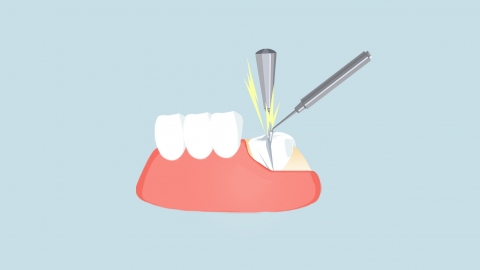Are there any ways to reverse tooth decay?
Generally, tooth decay may be caused by insufficient oral hygiene, poor dietary habits, early carious lesions, moderate caries, or deep caries. It is recommended to seek timely medical attention, identify the underlying cause, and improve the condition under a doctor's guidance through general management, medication, surgical treatment, or other methods. Specific analyses are as follows:

1. Inadequate Oral Hygiene: Incomplete brushing and failure to use dental floss allow food debris and dental plaque to accumulate on tooth surfaces. Bacteria break down these residues and produce acidic substances that erode enamel and lead to cavities. It is important to consistently brush teeth twice daily with fluoride toothpaste for at least three minutes each time, rinse the mouth with water after meals, clean interdental spaces daily with dental floss, and undergo regular dental checkups and professional cleaning.
2. Poor Dietary Habits: Long-term excessive consumption of sweets and sticky foods, combined with delayed oral cleaning after eating, allows sugars in food to be broken down by bacteria into acids, accelerating destruction of tooth structure. Individuals should adjust their diet by reducing intake of sugary and sticky foods, avoiding eating before bedtime, and rinsing or brushing teeth promptly after meals.
3. Early Carious Lesions: This stage involves demineralization of the enamel surface, presenting as white spots without obvious cavitation, indicating early-stage tooth decay. Patients may apply medications such as sodium fluoride glycerin paste, silver nitrate solution, or ammoniated silver nitrate solution to the affected area as directed by a healthcare provider to promote remineralization of enamel.
p>4. Moderate Caries: The decay has reached the superficial dentin, forming a visible cavity. Teeth may experience pain when exposed to hot, cold, sour, or sweet stimuli. Dental fillings are required: the dentist removes decayed tissue from the cavity and fills it with materials such as glass ionomer cement, composite resin, or polycarboxylate zinc cement to restore the tooth’s normal shape and function.5. Deep Caries: The decay extends close to the pulp chamber, resulting in a deep cavity. Pain from thermal stimuli is significant, and discomfort from food impaction may occur. If the pulp is not infected, an indirect pulp capping procedure can be performed—placing a protective pulp-capping agent at the base of the cavity before filling. If the pulp is already infected, root canal treatment is necessary first to remove the infected pulp, followed by crown restoration to recover chewing function.
Routine attention to oral hygiene and regular dental examinations are essential for early detection and treatment of tooth decay. Avoid using affected teeth to chew hard foods to prevent fractures, and reduce consumption of acidic foods to protect teeth from further erosion.




